In Syria, the West has been keen not to repeat the mistakes of Iraq — defined as being drawn into an open-ended ‘war of choice’ in the Middle East. This insight led to watching with folded arms as the regime of Bashar al-Assad massacred peaceful protesters and depopulated ancient cities with fighter jets and poison gas, an exodus that spread instability into Europe and allowed menacing strategic adversaries like Iran and Russia to gain footholds that Western policy had heretofore denied them.
Only once the Islamic State (IS) had a caliphate and was beheading Western hostages was it decided that it was time to do something. Needing partners, the West offered Syrians the chance to help us defeat terrorists whose rise the regime had facilitated for more than a decade. In exchange, we would enable al-Assad and his allies — Iran, its foreign legion of Shi’a jihadists, and Russia — or parties perceived as aligned with the regime, such as the Kurdish Democratic Union Party (PYD), to conquer the territory liberated from IS. This put those rebels who wanted to work with us in the impossible position of being seen as mercenaries who had betrayed the revolution — opening further space for the jihadists.
The notion that IS, a symptom of the war al-Assad started, could be treated with a narrow counter-terrorism strategy — in isolation from broader conflict — was always a fantasy. The recent collision between the coalition’s anti-IS war and the civil war is merely the intrusion of reality: it was one war all along. As the US-led coalition was destroying the caliphate, it was parcelling out territory to various contenders in Syria, changing the political and military balance in the wider war — mostly against the rebellion, from which IS had taken most of its territory.
Still, for many Westerners, there is something that just doesn’t quite compute; al-Assad ‘is a bad guy,’ but IS are monsters! They drown people in cages and enslave Yazidis — medieval savagery that must surely be everybody’s priority. Mustafa Khalifa’s 2008 novel The Shell helps break down this moral illusion between a jihadist organisation that revels in its brutality and a regime that proceeds in silence with a system of near-indescribable cruelty on a scale the Islamic State cannot even dream of.
Khalifa’s protagonist, Musa, is living in Paris. Returning to his home country, he is picked up by the security services, tortured by being folded into a tire and caned on his feet until he passes out, and then thrown in a cell. Musa will remain in detention for the next 13 years. Formally held, despite being an atheist of Christian background, as a suspected member of the outlawed Muslim Brotherhood, Musa will never be charged with any offence, and only finds out in the last few months of his captivity the trivial offence that landed him in prison. Musa spends the bulk of his time in the Desert Prison, the infamous Tadmor in the rural east of Syria.
This book’s narrative thread is evidently part-biographical. For 12 years, between 1982 and 1994, Khalifa was detained without charge by the al-Assad regime on suspicion of membership in a banned party. Khalifa spent much of this time in Tadmor.
When Tadmor was broken open and blown up by IS in May 2015, among those freed were the disappeared from Lebanon’s civil war 35 years earlier. Hafez al-Assad, Bashar’s father, intervened in Lebanon in 1976; part of the fallout was a slow-building rebellion inside Syria. Then as now, the al-Assad regime worked to destroy any viable opposition, physically and by polarising the situation, leaving it as a binary choice between the regime and Islamist terrorists. The insurgents had massacred cadets from Hafez’s Alawite sect, and after an attempt on Hafez the regime had responded with a massacre of its own at Tadmor; probably more than 1,000 Islamist prisoners were cut down in a few hours. The insurrection would be snuffed out at Hama in February 1982 with an indiscriminate ferocity that demolished a third of the Old City.
At the height of this conflict, more than 100 people per week were being executed, and Tadmor was a key site of the killings. One of the architects of this, who signed many of those warrants, was Mustafa Tlass, the then-Defence Minister, who died in France on 27 June.
Prisoners arrived at Tadmor passed through a ‘welcome party,’ where they are beaten and tortured; a significant number die before they ever reach a cell. When guards enter the overcrowded cells, prisoners dash to face the walls because they are not allowed to look at prison officials. Food is dumped outside the cells and retrieving it means braving the whips; if somebody stumbles it might be the last thing they ever do. Authorities draw down food rations to levels that induce starvation when the mood takes them. At night, prisoners are packed into the sleeping areas and anyone who sits up is ‘noted’; the next morning they are flayed.
The ‘breaks’ — exercise time when prisoners are allowed in the yard — involve routine beatings, on the way there, as they walk around the yard chained one to the other, and on the way back. In the bitter cold of the desert winter, prisoners are forced to stand naked in the yard, have water thrown over them, and those who fall are beaten, sometimes to death. Prisoners are verbally shamed at every opportunity, and kept in filthy conditions. The only pity shown is when the diseases that spread because of these conditions threaten to impact staff as well. Prisoners are made to drink from sewers, to imitate animals, and subjected to various forms of sexualised violence, including being forced to rape one-another — all designed to humiliate and dehumanise.
The total power — of life and death — held by the regime’s operatives is demonstrated when a prison warden, who receives a note threatening him, selects 14 prisoners and has them killed as a message. In another particularly arresting scene, two doctors in Musa’s cell are targeted by the prison doctor, who has a personal vendetta:
The municipals [soldiers who had been put in prison] dragged the doctors off … Adnan lay on his back as seven municipals took hold of him by the legs, his arms, his hips, and under his head. This was the ‘parachute’ torture. … The municipals lifted Adnan up, face upwards … rocked him a little, then … threw him up, and there was an enormous bang on the ground. Adnan gave a horrific cry of pain and did not move. The prison doctor waited a little … then turned and gave a signal to the municipals, who came forward and once more lifted Adnan. One, two, three—and this time there was no scream. … Salim was given the same treatment as Adnan. They left them lying in the middle of the yard forever.
In the background to this arbitrary murder is the bureaucracy of official death: after tribunals it would be difficult even to call show-trials, on Tuesday and Thursday men are taken to the gallows in batches of eight.
For Musa, the impact of the prison is magnified. The title of the book refers to ‘the shell’ into which Musa retreats. An atheist in a milieu dominated prisoners from competing Islamist organisations, Musa is isolated twice-over and even threatened with death by certain zealots. Al-Assad’s prisons were notorious production facilities for jihadists: between the behavior of the authorities and the needs of prison life, most prisoners ended up submitting to the call of the extremists. It was the most hardcore of these fanatics whom al-Assad turned loose in 2011 to divide and discredit the nascent uprising — filling the vacated cells with activists, lawyers, and students who took to the streets in peaceful protest at his corrupt and tyrannical rule.
At a certain point when reading Khalifa’s book, one is struck by the question: Given how cheap life is in these prisons, why does al-Assad even bother taking prisoners? There are, right now, no fewer than 65,000 people in al-Assad’s GULAG archipelago, 90 per cent of them civilians, and the real number might be as high as 200,000. When I put this to Faysal Itani, a Senior Fellow at the Atlantic Council, he said:
The political prisons serve their own specific purposes that murder would not: intelligence gathering; a display of control and the system’s rules; a warning effect; prolonging the suffering of perceived enemies; and the possible use of prisoners as leverage against families and associates. It is also really just the workings of a big, dysfunctional bureaucracy. It keeps soldiers busy and gives the security forces a place to vent, to feel powerful and exercise authority, which makes their own ordeals more bearable. It also employs some people, and it allows guards to extort money from prisoners’ families.
The methods of warfare al-Assad has employed — collective homicide and mass-expulsion in rebel-held areas — are the primary cause of death and destruction in Syria, as is plain for all to see. And it is possible — thanks to the United Nations, reports from Amnesty International, and the work of journalists like Ben Taub — to have some idea of what goes on out of sight at al-Assad’s prisons. Sednaya has eclipsed Tadmor as the byword for the systematic crimes in al-Assad’s dungeons. With the addition of a crematorium to the Sednaya facility, the transition from concentration camp to death camp is complete.
During one of the periodic rounds of debate about al-Assad as the lesser-evil, Frederic Hof, the lead State Department official on Syria when the crisis broke out, wrote that ‘those who counsel cooperation with Assad should think things through very, very carefully with their own reputations in mind’. It is good advice. The memory of what al-Assad has done is what will ensure that, even if he appears victorious for a time, any stability is illusory; revenge will be sought and those prepared to strike at the regime, like the jihadists, will find an audience. There is no apology that can be offered for crimes of this nature, on this scale, and a special kind of opprobrium will cling to those who try.

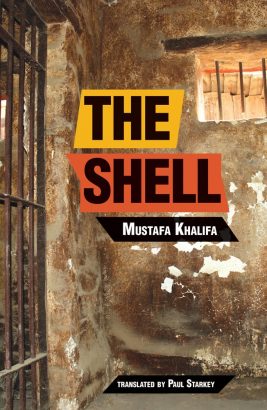

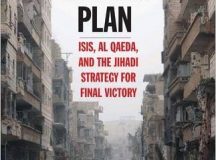
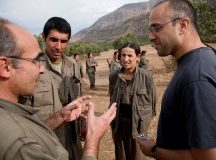
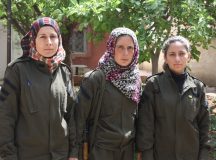
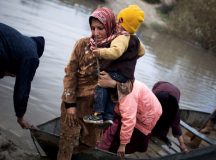































Comments are closed.